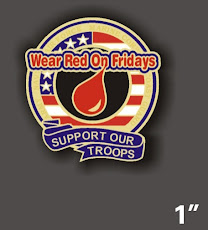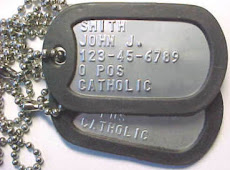I said that I would tell you about my ship someday. Today is a good day to start, but it is really long. Just show the guys the respect and read the story.
The USS Frank E. Evans DD754 (DD is the designation for a destroyer) was launched and commissioned in 1944, and, after a shakedown cruse, set sail for the Western Pacific (WESTPAC in Navy terminology.) She arrived on station in time for the Okinawa invasion and earned her combat stars battling kamikazes, dueling with Japanese ships and doing shore bombardment in support of the ground troops. She was in combat until the end of the war. From there she did a stint in China and eventually ended up in mothballs.
When Korea broke out she was re-commissioned and sent back to WESTPAC to fight in that war. She was engaged in many shore bombardments and even received small arms and mortar fire because she was so close to the shore. Her nickname is “The Fighter,” and she earned the moniker. However, after Korea, she was sent back to the mothball fleet in San Diego.
In the early 60’s she was brought back again and refitted in what was called FRAM II. Her WWI and Korea configuration was removed and she had a helicopter deck added to the same place her #3 gun mount was located. This was used, unsuccessfully, for an unmanned torpedo carrying drone. The Navy just couldn’t get it to work more than ONCE in a row. This is when I came on board, in 1962.
I was fresh out of boot camp and from a leave home, and I was looking forward to boarding a true fighting ship. I got off the pier bus and looked down the pier. There were four small ships on the left (port) side of the pier and the beautiful, huge, gray ship on the right (starboard) side. I walked down to the gangway and ask the Marine (this should have been my first hint, since Marines don’t guard the gangways of destroyers) if this was the Evans. He said that this was the USS Helena, a cruiser of great renown. He pointed across the pier to the four little ships and said the Evans was the one next to the pier. Man! Only a little over 300 feet long and I was going to go to sea in THAT? Oh, well! I reported aboard. I was sent immediately to the deck force (boson mates who took care of all things outside – painting, chipping pain, painting, sweeping, swabbing (mopping) and painting, not to mention chipping and painting. My bunk was in the forward part of the ship two decks down from the main deck.
I spent two months there and, while at sea, I was stuck painting a 3’ by 3’ by 3’ locker below the anchor chain locker, and getting sicker by the minuet. Just before I was about to pass out, one of the guys stuck his head in and said some lieutenant wanted to see me. I reported to his stateroom and was told that I had scored high enough on my battery of test to be considered for radar training, and did I want to give it a try. I was trying soooo hard to keep from upchucking on his shoes that I almost wasn’t able to get out my, “Hell, yeah… uh, Sir.” So that night I had the mid-watch (midnight to four in the morning.) This normally meant I would get to sleep in until eight a.m., but I was awaken at six a.m. and told to report to CIC (Combat Information Center or Combat for short.) I was then made a radar striker.
The first person I met was a gravely voiced, thick glasses wearing, lisp speaking first class pettyofficer by the name of Gary Hodgson. He never combed his hair and it stuck out all over the place like a mad scientist and his laugh was as raspy as his voice – and he laughed often.
This is where I spent my tenure as a sailor in the Navy. I was able to visit the WESPAC (three ports in Japan and one in Hong Kong) and Hawaii and Midway Island and San Francisco and San Diego. Although we did operate with the USS Oriskiny, an attack aircraft carrier with jets on board, we mostly operated with the USS Hornet, an anti-submarine aircraft carrier with propeller driven planes on board. We did do some early bombardment on Viet Nam in support of the advisors there at the time. But no real combat experience for me. I left the ship in 1964 and returned home a relatively normal life. But the Evans kept on doing her thing.
After I got off she made five more trips to the WESTPACK and received another combat star for her experiences. In 1969, before she left for her next cruse to the Pacific, all the personal had to have urine test for drugs. She set sail and during the cruse she pulled into Subic Bay, Philippines. She was immediately boarded by several government type agents and arrested several of the crew for failing the drug test. The captain was furious and demanded more men to bring his crew back up to compliment. So he received around thirty new recruits fresh from boot camp – some of whom had not even had the opportunity to go home after their training. Also on board were three brothers from Niobrabra, Nebraska, Gary, Gregory and Kelly Sage; Chief Larry Reilly had extended a year before retiring to serve with his son Larry Jr.; and my old friend Gary Hodgson was serving out his last year before retiring.
Anyway, there were a goodly number of untrained men on board. And she was heading to Viet Nam to be on “the gun line.” Meaning she would be doing close in bombardments to aide the men in the jungles.
She was there for about a two weeks when she (and when I say she I mean all four destroyers in the squadron) was ordered to head South out to the edge of the South China Sea and join up with the HMAS Melbourne and her task group of Australian and New Zeeland ships to practice in joint maneuvers.
One of the maneuvers that are done dozens of times when operating with a carrier is moving to the rear of the carrier. When aircraft are launched or retrieved there has to be a tin can 500 yards off the stern of the carrier in case something goes wrong. On June 3rd, just after three a.m., the Evans was order to go to plain guard. All she had to do was turn to port and circle around to fall onto station as the carrier went by. But the OD (Officer of the Deck) got confused between our base course and the zig zag course and he turned to starboard (right) and headed on a collision course with the Melbourne.
Everything became confused about then. Radar was telling them they were on a collision course. The Melbourne told him they were on a collision course, and finally, the OD ordered the rudder Hard Right. At the same time the Melbourne broke all the rules of the sea (the biggest ship has the right of way) and turned her rudder Hard Left and she rammed and cut in half the Evans at mid-ships. Everyone in the forward fire room was killed instantly by crushing metal or twelve hundred degree steam. Everyone in CIC was killed. All but five men below decks were drowned because the front half rolled over and sank in three minuets. Among the dead were all three Sage brothers, my friend Gary Hodgson and Chief Reilly watched his son go down (he was in the forward fire room – he volunteered to help out that night because one of the regular guys was sick or something.) In all, we lost 74 of Americas finest, and only one body was ever recovered and he was burnt pretty bad.
There were many stories of heroics that night. Our guys were trying to keep the back half afloat while working with the wounded and burned. The Melbourne had helicopters in the air immediately and they saved many of your men. There were men jumping OFF the Melbourne into the water to save some of our men and others were on the deck with rifles shooting at sharks. Many men on both ships earned commendations that night. The other ships tried a search and rescue, but no more were found. The front half carried and drug the seventy four down to eternity.
Afterward, the Melbourne captain’s 30+ years of service was ruined and he left the Australian Navy without his retirement. The captain of the Evans was exonerated but never held command of a ship again. He retired, but never got over loosing his ship and so many men. He passed away a couple of years ago, but he wouldn’t attend any of our reunions. Not one survivor ever blamed him for anything, but Navy Command has is traditions, and he felt so responsible.
The OD got a letter of reprimand in his file, which means he would never command a ship in the USS Navy. In civilian life he would have been charged with 74 counts of manslaughter. But the Navy has her own rules and customs. The OD left the Navy and no one knows where he is – that I know of. I haven’t mentioned the names, because it isn’t necessary. He has his cross to bear and doesn’t need any help from others.
So now you know, or maybe you don’t because I can’t express the story in my limited vocabulary, why I feel so proud to be at the reunion with such distinguished and brave men. I don’t know how I would have reacted in their place, but being a radarman, I would have been bunking below the mess decks (three decks down) where only two radarmen made it out. In the bow, where I was first stationed, only three men made it out. So I might not have been here at all. As a radarman I have been involved in many plain guard situations and it could have happened at any time, especially at night. Not likely, but it could have.
The HMAS Melbourne had already sunk one Australian destroyer doing the same maneuver a couple of years before and had two close calls a few nights before the collision with a couple of our destroyers. I believe she was a jinxed ship, but that’s just me. If you want to read some first hand accounts, Google USS FRAND E EVANS DD7545 and look around. The association is working on a new web site where we will be able to blog. I’m looking forward to that.
I guess this is way too long for a blog, but I couldn’t stop typing. I hope you remember the 74 in your prayers. I do!










































